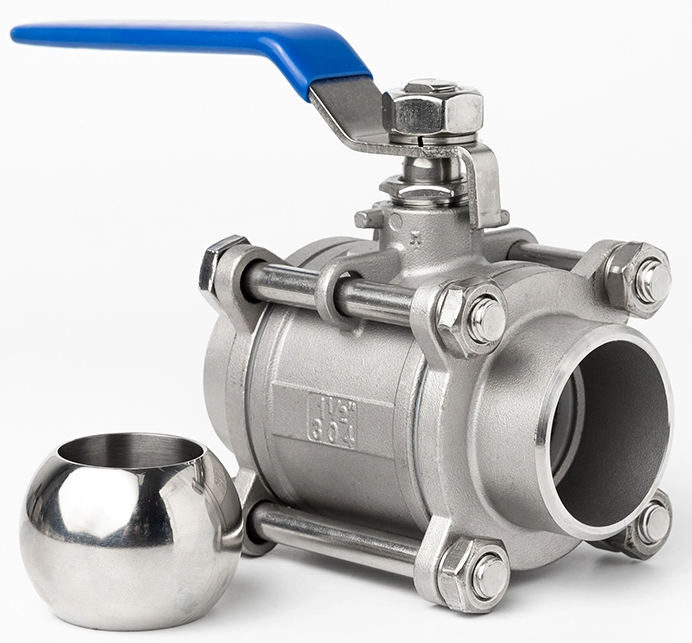The root welding of the weld connecting the valve to the pipeline should be done using argon arc welding to ensure its internal smoothness and cleanliness. When welding a ball valve, the valve needs to be open to prevent the sealing surface from being damaged by splashing welding slag. For a butterfly valve, the valve should be closed to similarly avoid damage to the sealing surface from splashing welding slag. If the sealing material is not resistant to high temperatures, it should be removed before welding to prevent the high temperature from damaging the sealing material.
To ensure welding performance, it is necessary to control the interlayer temperature during welding. For ordinary carbon steel, the interlayer temperature should be below 250°C, and for common austenitic stainless steel, it should be below 150°C (some even below 100°C, generally below 120°C).
Excessive interlayer temperature can cause coarse grains in the heat-affected zone, resulting in a decrease in weld strength and low-temperature impact toughness. If the temperature is below the preheating temperature, cracks may occur during the welding process. Therefore, it is stipulated that the interlayer temperature should not be lower than the preheating temperature and should not exceed a certain limit.
For austenitic stainless steel, excessively high interlayer temperature can lead to overheating at the weld, causing the weld to turn black.
Knowledge Overview: Interlayer Temperature in Welding
Interlayer temperature in welding refers to the temperature difference between different layers within the welding area during the welding process. This temperature difference has a crucial impact on welding quality and strength.
During the welding process, the temperature in the welding area constantly changes because the metal material needs to be heated to its melting point before welding. In this process, the temperature in the welding area keeps rising until it reaches the melting point. Then, the temperature in the welding area remains near the melting point until the welding is completed.
The temperature difference between different layers in the welding area during the welding process affects welding quality and strength. If the temperature difference is too large, it can result in excessive stress in the welding area, leading to cracks or deformation. These issues significantly impact welding quality and strength.
To avoid these problems, it is essential to control the temperature difference between different layers in the welding area during the welding process. This can be achieved by controlling the heating rate and heating time in the welding area. Excessive heating rate or prolonged heating time can lead to a significant temperature difference in the welding area, affecting welding quality and strength.
In addition to controlling the heating rate and time, using a preheater can help control the temperature difference between different layers in the welding area. The preheater can uniformly raise the temperature in the welding area before welding, reducing the temperature difference between different layers. This effectively improves welding quality and strength.
Interlayer temperature in welding is one of the critical issues that need attention during the welding process. Controlling the temperature difference between different layers in the welding area can effectively enhance welding quality and strength, ensuring the reliability and stability of the welding.

